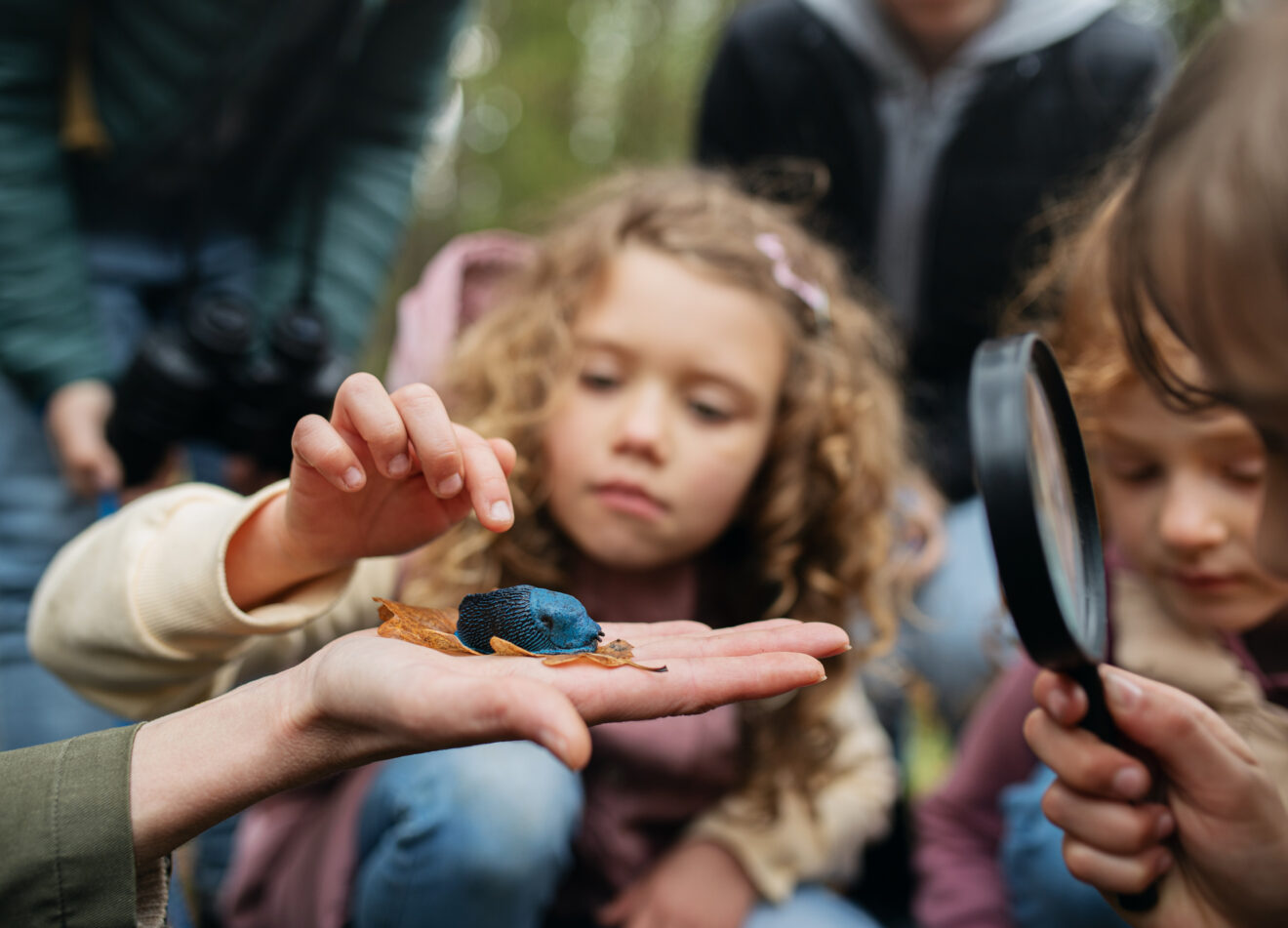Preschoolers need to have several outlets throughout the day where they get to express their individual wants and needs within the framework of the classroom. For many educators, that’s called “playtime.” Playtime is crucial, and playtime is beautiful, but can you imagine how mundane it is for a child to have the same blocks of play every day from September to June? With center-based play, you can change what those play centers look like from month to month so that kids are always experiencing something new.
Rotate several centers
To keep things fresh at Brooklyn Preschool of Science, we have several centers ready to go to align with the ideas we’re learning about. But we also like to come up with fun ideas on the fly that are related to what students are learning.
For example, if we’re doing a theme on plants for the month of April, we might bring out farm animals to create an agriculture-themed center that will promote the month’s concepts. Or we might walk across the street to the florist and buy some cheap flowers to set up with easels and rocks and brushes. We’ll show students how to use the rocks to crush the flower petals and make beautiful chlorophyll paintings.
How many new centers we are offering at any given time depends somewhat on the creativity and passion of the teachers. If students are learning about insects and their thoraxes, a teacher might put out several different-sized clay balls so students can create whatever kinds of insects they are interested in. On the other hand, we always have centers like Magna-Tiles or dramatic play, which includes clothes that let kids dress up as a nurse or a doctor or a firefighter.
Students should be offered center-based play once every three hours that they are in our school, so some of them are visiting three centers a day. That means we need to have a wide variety available at any time.
Make the centers age-appropriate
Our students are ages 2 to 4, so they have a range of abilities and we need to make sure that different centers cater to different developmental stages. A 2-year-old doesn’t have the fine motor skills to feed the 3D printer, for example, so they might be playing with a variety of bug toys while a 4-year-old is on the printer.
Younger students do get to use the 3D printer, but they have a lot of teacher guidance. They can’t really draw a bug to tell the printer what to make, whereas a four-year-old can visualize the thorax, legs, abdomen, and head. While two-year-olds will get a bunch of toys and maybe puzzles of bugs to put together, a four-year-old might get to design and cut out their own bug puzzle.
Right now, we are in a unit on simple machines. Our 2-year-olds have a train set with tracks that hold coins of different colors. Each colored coin makes the train do something different, like lighting up, making a noise, stopping, or going forward or backward. The 4-year-olds, on the other hand, are programming a robot to shoot a pingpong ball through a net. They’re all learning about programming, but in age-appropriate ways.
Bring out the flashy tech
Sometimes technology itself brings all the excitement and fun a center activity needs. If we’re doing a theme on living things, for example, the 3D printer is going to be running as students print their own bugs, worms, spiders, roaches and anything else they want.
While the youngest students are playing with the programmable train set and the older students are learning to code with the robot, our 3-year-olds use a different robot that is almost a fusion of the other two activities. It’s a car about the size of your palm, and it lights up and opens its eyes when you turn it on. Students have a series of mats that are about 6 inches square and different colors. It’s designed to encourage inquiry, so students need to try different mats until they find out that the robot will only begin moving if you start it out on a green mat.
Eventually, we’ll ask them something like, “Can you get the robot to leave the classroom and visit your educational director out in the lobby?” They’ll have to figure out how to make it turn and leave the classroom, and turn again, but they’ll figure it out, even if they didn’t know how to get the thing moving at the beginning of the day.
Create your own animal kingdom
Children love animals, so it’s always fun to have at least one center that features living things. We have about 50 different animals at our school, from bearded dragons and gerbils to chicks in incubators, and we like to make them accessible to students. If they want to spend their center time watching a guinea pig run around in a guinea pig ball, we’re going to make that happen for them. We like to let them make independent choices whenever possible. If they want to sit with a bunny on their lap for 20 minutes, we’ll let them have that meditative moment with the bunny.
I don’t think preschools should be completely play-based, but there’s something beautiful about play-based programs. It’s so important to find the balance of curriculum and cross-cut concepts within the curriculum, then find the time to just disconnect from those thematic units and give the kids the chance to say, “This is what I want to do.”
Carmelo Piazza is the executive director/educational director of Brooklyn Preschool of Science. He can be reached at [email protected].
Opinions expressed by SmartBrief contributors are their own.
_________________________
Subscribe to SmartBrief’s FREE email newsletter to see the latest hot topics on EdTech. It’s among SmartBrief’s more than 250 industry-focused newsletters.
